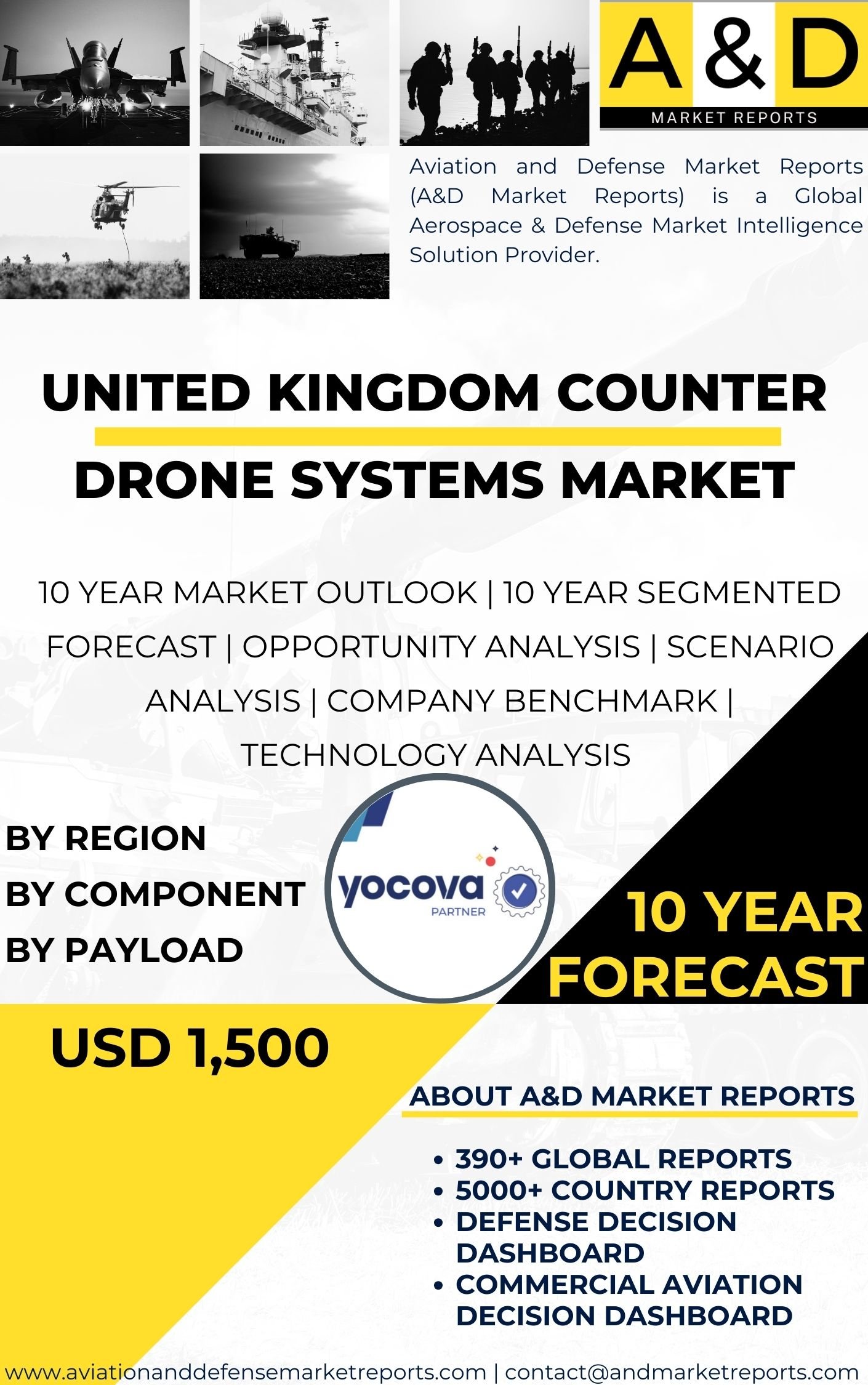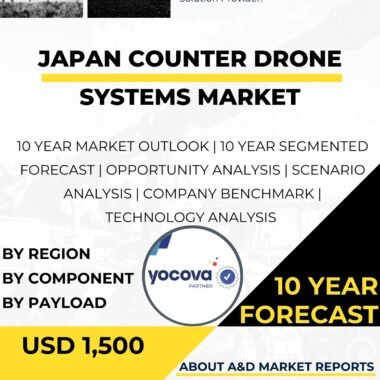Description
United Kingdom Counter Drone Systems Market: Overview
The United Kingdom counter drone systems market is growing rapidly as the country faces rising threats from unauthorized drones. While drones support many useful applications, they can also be misused for illegal activities or disruptive acts. These risks affect critical infrastructure, public events, airports, prisons, military bases, and other sensitive areas. As a result, the UK now requires strong counter drone systems to detect, identify, track, and neutralize harmful drones and protect national airspace.
Growth Drivers in the United Kingdom Counter Drone Systems Market
The United Kingdom counter drone systems market has expanded due to the increasing number of drone-related incidents. Affordable and easily available drones have led to higher misuse, which demands better protection technologies. The market includes detection tools, identification systems, tracking solutions, and neutralization technologies.
Detection Technologies in Counter Drone Systems
Detection is the first step in countering rogue drones. UK-based systems use a mix of radar, radio-frequency (RF) sensors, electro-optical cameras, and acoustic sensors.
-
Radar and RF sensors analyze electronic signals to identify unusual drone activity.
-
Electro-optical cameras detect drones by observing their shape and movement.
-
Acoustic sensors pick up the unique sound signatures of drone motors.
Combining these sensors improves detection accuracy and reduces false alerts.
Tracking and Identification in the United Kingdom Counter Drone Systems Market
Once a drone is detected, tracking and identification systems monitor its movement. Machine learning and advanced algorithms help classify the drone as friendly or hostile. These systems assess the drone’s trajectory and behavior, and when possible, identify the operator. This information helps authorities make quick and accurate decisions to reduce risks.
Neutralization Methods: Non-Kinetic and Kinetic Solutions
When a drone is confirmed as a threat, counter drone systems must neutralize it.
Non-kinetic solutions include:
-
Jamming RF signals
-
Blocking GPS communication
-
Using lasers to disrupt cameras
These methods stop the drone without physical damage but may not work on advanced or autonomous drones.
Kinetic solutions involve physically disabling the drone.
Techniques include:
-
Launching nets
-
Using interceptor drones
-
Deploying trained birds of prey
These methods require strict safety rules to prevent harm to people or property.
Regulatory Challenges in the United Kingdom Counter Drone Systems Market
The market operates in a complex regulatory space. Counter drone systems must follow strict aviation and privacy laws. They must avoid interfering with legitimate drone operations while still protecting sensitive locations. Balancing security and privacy remains a major challenge.
As drones gain better autonomy and stealth features, countermeasures must continue evolving. Continuous investment in research and development is essential to keep pace with advancing drone technology.
Competitive Landscape and Industry Collaboration
The United Kingdom counter drone systems market is highly competitive. Domestic companies, international defense firms, and specialized start-ups all contribute to new innovations. The UK government works closely with private companies through research and development programs. Law enforcement agencies and operators of critical infrastructure increasingly deploy these systems to protect high-value areas.
Future Outlook for the United Kingdom Counter Drone Systems Market
The market will continue growing as rogue drone threats rise. Advanced technologies and stronger investments will lead to more effective and efficient countermeasures. Integration with security systems at airports, power plants, stadiums, and military bases will become more common, creating a connected and layered defense environment.
Conclusion
The United Kingdom counter drone systems market is expanding due to the growing threat of unauthorized drones. Detection, tracking, and mitigation technologies are essential for maintaining safe airspace and protecting public safety. As drone technology evolves, the UK will continue enhancing its counter drone capabilities through innovation, regulation, and strong collaboration between government and industry partners.




